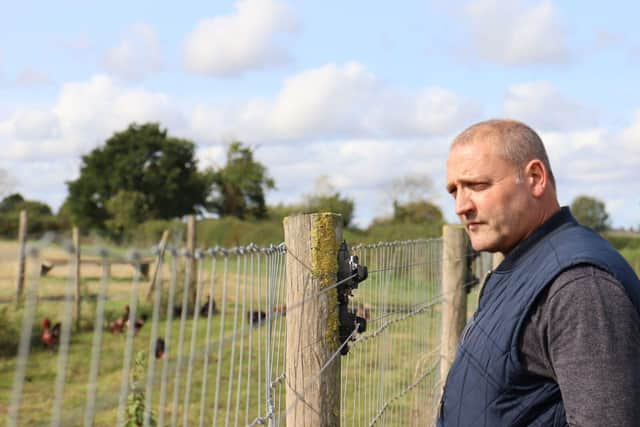Snow brings increased flooding risks to UK farms
and live on Freeview channel 276
Farmers and poultry owners should be concerned about flooding not just because of the water rise itself but because the floods bring with them the increased threat of disease.
International studies have shown an increased risk of Salmonella in livestock after flooding events, and as standing water is one of the biggest reservoirs for disease it is easy to see how, with a flooded water table and overworked drainage, domestic poultry will have ample opportunity to drink from contaminated water.
Advertisement
Hide AdAdvertisement
Hide AdWhilst insurers are still trying to establish the full cost to homes and businesses of these events, the cost to the nation’s already hard-pressed farms is sure to run into the many millions.


In response, the National Farmers Union (NFU) Deputy President, Tom Bradshaw said of the flooding that: “Farming is on the front line of climate change and the sector is experiencing volatility and severe weather events more often. It’s why we absolutely need a long-term plan to improve how we manage water in times of flood and drought, as we regularly experience both on an annual basis, and both severely impact our ability to produce food.”
The NFU is currently demanding that the government strengthens its commitment to UK food security with firm action on water management. And fears of how this impacts farmers are shared across many industry groups, including the Country Land and Business Association (CLA), as they echo the NFU’s concerns.
Regional Director of the CLA, Tim Bamford said: “Flooding can have a massive impact on farming and the countryside, with crops damaged and rural communities often cut off.
Advertisement
Hide AdAdvertisement
Hide Ad“Farmers want to provide solutions to the climate crisis. But until the Government steps in to tackle planning delays and offer full and proper compensation to those storing floodwater, farmers will continue paying the price for problems they didn’t create.”
A spokesperson for the Department for Environment, Food and Rural Affairs (Defra) stated: "We’re conscious of the impact the recent Storms will have had on the farming community, and the important role to play in reducing the risk of flooding and coastal erosion as we adapt to climate change."
Amidst the looming threat of flooding an increased vulnerability to disease emerges, particularly as we approach a season when disease outbreaks are traditionally more prevalent across the UK.
Julian Sparrey, Livetec’s Technical Director, said that in preparing for heavy rainfall: “Any pool of water has the potential to carry viruses. Building maintenance is paramount. It's crucial to ensure that your structure is truly watertight, particularly in the vicinity of roof fans, as water infiltration can occur there, and ensuring that water cannot gain access through the walls and under cracks in doors.
Advertisement
Hide AdAdvertisement
Hide AdOne way to check your vulnerabilities to flooding is looking at areas where water pools, looking for moss on concrete and on the sides of sheds and ensuring you have measures in place to prevent flooding in these areas.”
Biosecurity processes must also be followed too, according to Sparrey: “It is also critical to ensure that anyone entering sheds changes wet boots before entering a shed to prevent the introduction of rainwater. Taking extra biosecurity measures where there is a risk of flooding will be critical to preventing disease ingress through water."
It’s crucial, then, that authorities and agriculture carefully consider the added complication of disease when planning their flood protection because the danger of disease can live long after the waters themselves have receded.